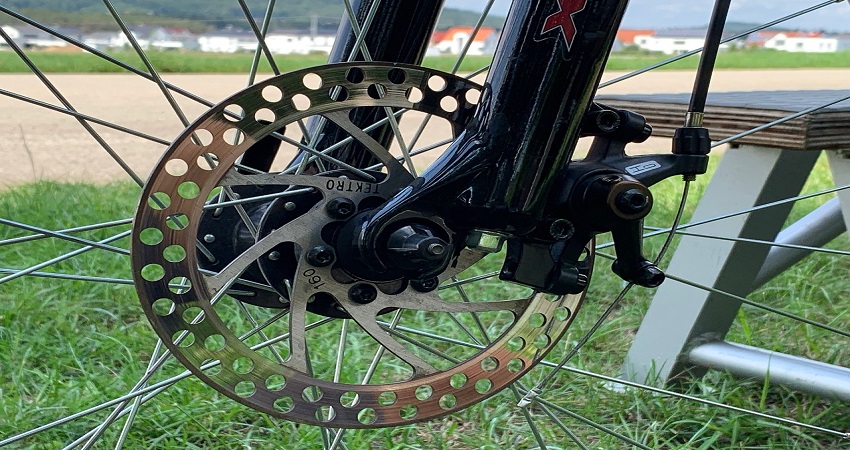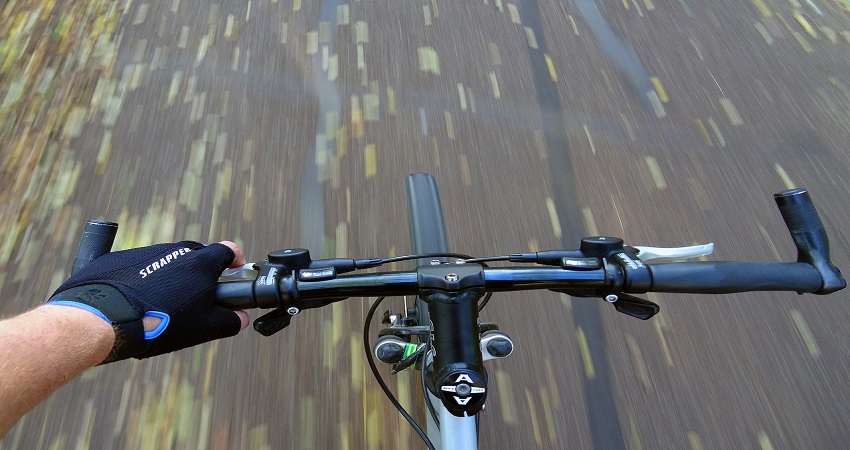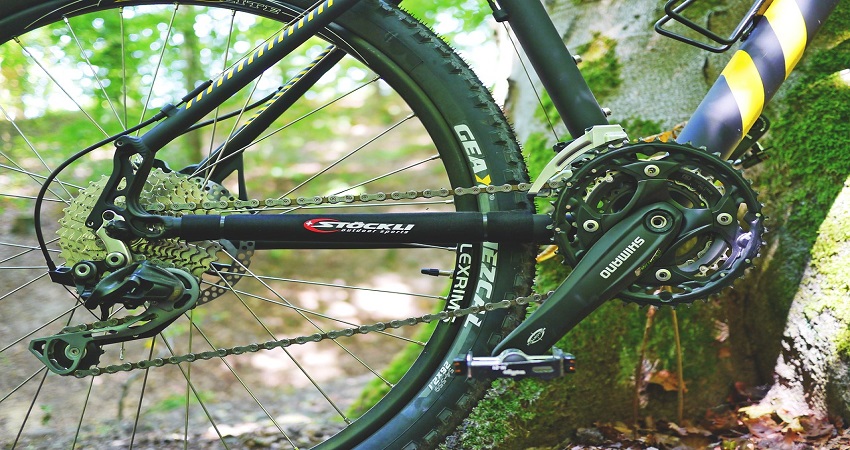Mountain bike brake pads are not universal and vary in size and shape depending on the make and model of the bike. Mountain bike brake pads are not universal and are specific to each make and model of the bike.
This means that you cannot interchange brake pads between different types of mountain bikes. The size and shape of brake pads are designed to fit the specific brake system of each bike, ensuring optimal performance and safety. It is crucial to choose the correct brake pads for your mountain bike to ensure proper braking power and control.
Using the wrong brake pads can lead to decreased braking performance, increased wear on your bike’s components, and even safety hazards. Therefore, it is important to consult your bike’s manufacturer or a professional bike mechanic to determine the appropriate brake pads for your specific mountain bike.
Mountain Bike Brake Pads
When it comes to mountain biking, having reliable brakes is crucial for your safety and control. One of the key components of your bike’s braking system is the brake pads. These small but mighty components play a pivotal role in stopping your bike effectively, whether you’re tackling steep descents or navigating tricky trails.
Mountain bike brake pads come in various types, each designed with specific characteristics to cater to different riding styles and conditions. Here are the most common types you will come across:
Sintered Brake Pads
Sintered brake pads are made from a mixture of metallic particles fused together at high temperatures. These pads are known for their exceptional durability and heat resistance, making them suitable for aggressive downhill and wet riding conditions. They provide consistent braking performance even when subjected to high temperatures or prolonged use.
Organic Brake Pads
Organic brake pads, on the other hand, are made from a blend of organic materials such as rubber, cork, and resins. These pads tend to be softer and quieter than sintered pads, providing excellent stopping power without being overly grabby. Organic pads are generally preferred for cross-country and trail riding, as they offer good modulation and work well in dry conditions.
Semi-Metallic Brake Pads
Semi-metallic brake pads combine the best of both sintered and organic pads. They feature a mixture of metallic fibers and organic materials, providing a balance between durability, heat resistance, and modulation. Semi-metallic pads are suitable for a wide range of riding styles and conditions, making them a popular choice among mountain bikers.
When it’s time to replace your mountain bike brake pads, it’s crucial to consider compatibility with your bike’s specific brake system. Different brake systems require specific brake pad designs to ensure optimal performance and safety. Here’s a quick overview:
| Brake System | Compatible Brake Pads |
|---|---|
| V-Brakes | Cartridge or threaded brake pads |
| Disc Brakes | Specific to the brake caliper (e.g., Shimano, SRAM, etc.) |
If you’re unsure about which type of brake pads are compatible with your mountain bike’s brake system, it’s best to consult your bike manufacturer’s specifications or seek advice from a knowledgeable bike mechanic.
Remember, having properly functioning and compatible brake pads is crucial for your safety and riding experience. Regularly inspect and replace your brake pads as needed to ensure optimal performance and confidence on the trails.
Types Of Brake Pads
When it comes to mountain bike brake pads, there are three main types to choose from: organic, semi-metallic, and sintered brake pads. Understanding the differences between these types can help you make an informed decision when replacing your brake pads.
Organic Brake Pads
Organic brake pads are made from a combination of materials such as rubber, fibers, and fillers. They are often preferred by riders for their initial bite, which provides a strong and responsive braking performance. These brake pads also tend to be quieter compared to other types.
However, organic brake pads have their limitations. They wear out faster compared to other types, especially in wet or muddy conditions. This means they may need more frequent replacements, which can be costly in the long run. Additionally, they may not perform as well in extreme heat, causing a decrease in braking power.
Semi-metallic Brake Pads
Semi-metallic brake pads are made by combining organic materials, such as rubber, with small amounts of metal fibers, typically steel. This composition allows them to offer a balance between performance and durability.
- Provide good braking power in various conditions
- Less prone to fade during prolonged braking
- Longer lifespan compared to organic brake pads
- May generate more noise compared to organic brake pads
- May wear down brake rotors faster compared to organic brake pads
Although semi-metallic brake pads tend to be noisier and can cause faster rotor wear, they are a popular choice among riders who value both performance and longevity.
Sintered Brake Pads
Sintered brake pads are made by compressing metallic powders at high temperatures to create a dense and durable material. As a result, they offer excellent braking performance and long-lasting durability, making them a favorite among downhill riders and those who ride in extreme conditions.
Sintered brake pads have several advantages:
- Provide consistent braking power over a wide range of temperatures
- Perform well in wet, muddy, or dusty conditions
- Have a longer lifespan compared to other types of brake pads
- Less susceptible to heat-induced fade
However, they also have a few drawbacks. Sintered brake pads tend to be more expensive and noisier compared to other types. They may also require a longer break-in period before achieving optimal performance.
Before choosing a type of brake pad, consider your riding style, terrain, and weather conditions. Keep in mind that different brake systems may be compatible with specific types of brake pads, so always consult your bike manufacturer’s recommendations and seek professional advice if needed.
Compatibility With Different Brake Systems
When it comes to mountain bike brake pads, one of the common questions that arise is whether they are universal or compatible with different brake systems. This is an important consideration for riders who may be shopping for replacement brake pads or looking to upgrade their current ones.
Disc Brakes
Disc brakes are a popular choice among mountain bikers for their powerful stopping capabilities and consistent performance in all weather conditions. These types of brakes use a rotor and caliper system to apply pressure to the brake pads, which then makes contact with the rotor to slow down or stop the bike.
When it comes to compatibility, it’s important to note that disc brake pads are not universal. Different brands and models of disc brakes have their own specific pad designs and dimensions. Therefore, when searching for replacement pads, it is crucial to choose ones that are specifically designed for your type of disc brake system.
To ensure compatibility, you should look for brake pads that are compatible with the same brand and model of your disc brake system. This information can usually be found in the product description or on the manufacturer’s website. Using the wrong brake pads can lead to poor performance, reduced stopping power, and potentially safety issues.
Rim Brakes
Rim brakes are another common type of brake system found on mountain bikes. These brakes use brake pads that make contact with the sides of the wheel rims to slow down or stop the bike.
When it comes to compatibility, rim brake pads are generally more interchangeable compared to disc brake pads. Most rim brake pads have a similar design and dimensions, allowing them to be used with various brands and models of rim brakes. However, it’s still important to consider factors such as pad material and rim compatibility.
When shopping for replacement rim brake pads, make sure to choose ones that are suitable for the type of rim brake system you have. Consider factors such as brake pad material, as different materials provide varying levels of stopping power and durability. Additionally, ensure that the pad design is compatible with your specific wheel rim, as certain pad shapes may not fit properly or provide optimal performance.
To summarize, mountain bike brake pads are not universal, especially when it comes to disc brakes. It is important to choose brake pads that are specifically designed for your brand and model of disc brake system to ensure proper fitment and performance. On the other hand, rim brake pads are generally more interchangeable but still require consideration of pad material and rim compatibility. By taking these factors into account, you can ensure optimal brake performance for your mountain bike.
Factors To Consider When Choosing Brake Pads
When it comes to mountain bike brake pads, it’s important to choose the right ones that provide optimal braking performance and safety. There are several factors to consider when choosing brake pads for your mountain bike, such as the material, braking performance, and weather conditions. Let’s dive into each of these factors in more detail:
Brake Pad Material
One of the key factors to consider when selecting brake pads for your mountain bike is the material they are made of. Brake pads can be made from various materials, each with its own characteristics and advantages.
Here are some common brake pad materials:
| Material | Advantages |
|---|---|
| Organic | – Good initial bite – Quieter operation – Less rotor wear |
| Sintered | – Excellent heat resistance – Longer lifespan – Consistent performance in various conditions |
Consider the type of riding you do and your personal preferences when choosing the brake pad material. If you prioritize initial bite and noise reduction, organic brake pads might be a suitable choice. On the other hand, if you need brake pads with high heat resistance and durability, sintered brake pads could be a better option.
Braking Performance
Another important consideration when selecting mountain bike brake pads is their braking performance. The braking performance of a brake pad can significantly affect your riding experience and safety.
Factors that contribute to braking performance include:
- Modulation: The ability to control the braking force smoothly and gradually.
- Power: The overall stopping power provided by the brake pads.
- Consistency: The ability of the brake pads to deliver consistent performance in various conditions and temperatures.
Consider your riding style, the terrain you ride on, and the level of braking performance you desire. If you ride aggressively or on steep and technical trails, you may want brake pads with strong braking power and excellent modulation.
Weather Conditions
Lastly, take into account the weather conditions you often ride in. Different brake pad materials can perform differently in wet, dry, and muddy conditions.
Here’s a breakdown of brake pad materials and their performance in different weather conditions:
| Weather Conditions | Recommended Brake Pad Material |
|---|---|
| Dry | Organic or Sintered |
| Wet | Organic or Sintered (sintered pads may provide better wet performance) |
| Muddy | Sintered |
If you frequently ride in wet or muddy conditions, sintered brake pads are generally a better choice as they offer improved performance and durability in these scenarios.
By considering the brake pad material, braking performance, and weather conditions, you can make an informed decision when choosing brake pads for your mountain bike. Remember, selecting the right brake pads can greatly enhance your riding experience and keep you safe on the trails.
How To Replace Brake Pads
Regular maintenance is crucial to keep your mountain bike in optimal condition for a smooth and safe ride. One essential aspect of maintenance is replacing the brake pads when they wear out. In this step-by-step guide, we will walk you through the process of replacing your mountain bike brake pads, ensuring you have the necessary tools and know-how to complete the task with ease.
Tools Needed
Before you begin replacing your mountain bike brake pads, gather the following tools:
- Allen wrench set
- Torque wrench
- Flathead screwdriver
- New brake pads
Make sure you have these tools handy before you start the replacement process. Having everything ready will save you time and frustration during the process.
Step-by-step Guide
Follow these steps to replace your mountain bike brake pads:
- Step 1: Begin by loosening the brake pad retention bolts with your Allen wrench. This will allow you to easily remove the old brake pads from the brake calipers.
- Step 2: Once the bolts are loosened, gently slide out the old brake pads from the brake calipers. Take note of their orientation to ensure you can accurately install the new pads.
- Step 3: Use a flathead screwdriver to press the brake pistons back into the caliper. This will create space for the new, thicker brake pads.
- Step 4: Now, take the new brake pads and align them correctly with the caliper, ensuring the orientation matches that of the old pads.
- Step 5: Once aligned, tighten the brake pad retention bolts using your torque wrench. Make sure they are secure but not excessively tight.
- Step 6: Finally, test the brakes by squeezing the brake lever. Ensure the pads make proper contact with the rotors and that the stopping power is adequate.
By following these simple steps, you can quickly and easily replace your mountain bike brake pads, ensuring your brakes perform optimally and enhance your riding experience.
Frequently Asked Questions For Are Mountain Bike Brake Pads Universal?
Are Mountain Bike Brake Pads Universal?
No, mountain bike brake pads are not universal. Different bikes may require different types of brake pads based on the braking system used and the specific model of the bike. It is important to check the manufacturer’s recommendations or consult a bike shop to ensure you are using the correct brake pads for your mountain bike.
Conclusion
To conclude, when it comes to mountain bike brake pads, universality is not always guaranteed. It is essential to consider the specific type of brake system and the compatibility of the brake pads. By understanding the requirements and researching different options, you can ensure optimal braking performance and safety during your rides.



